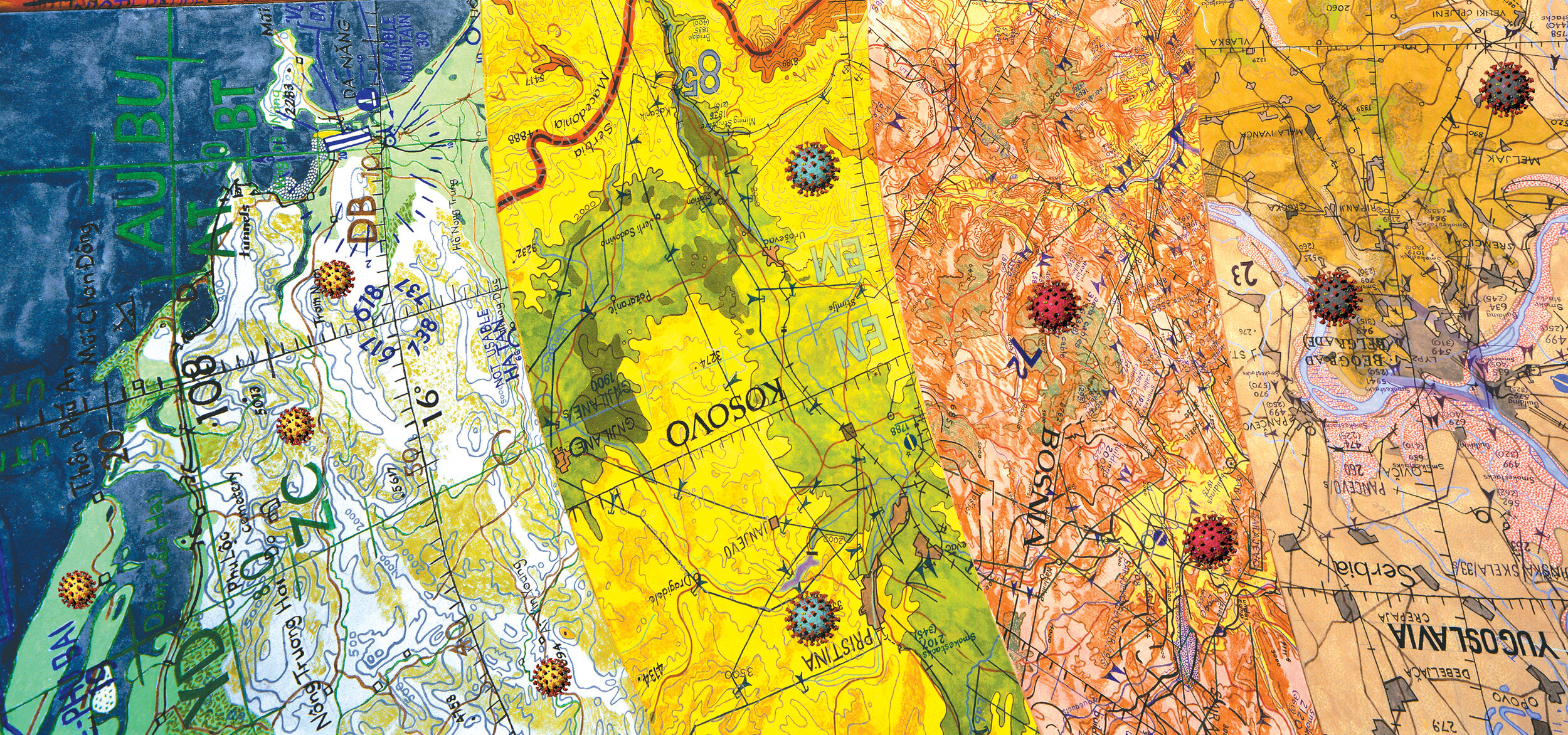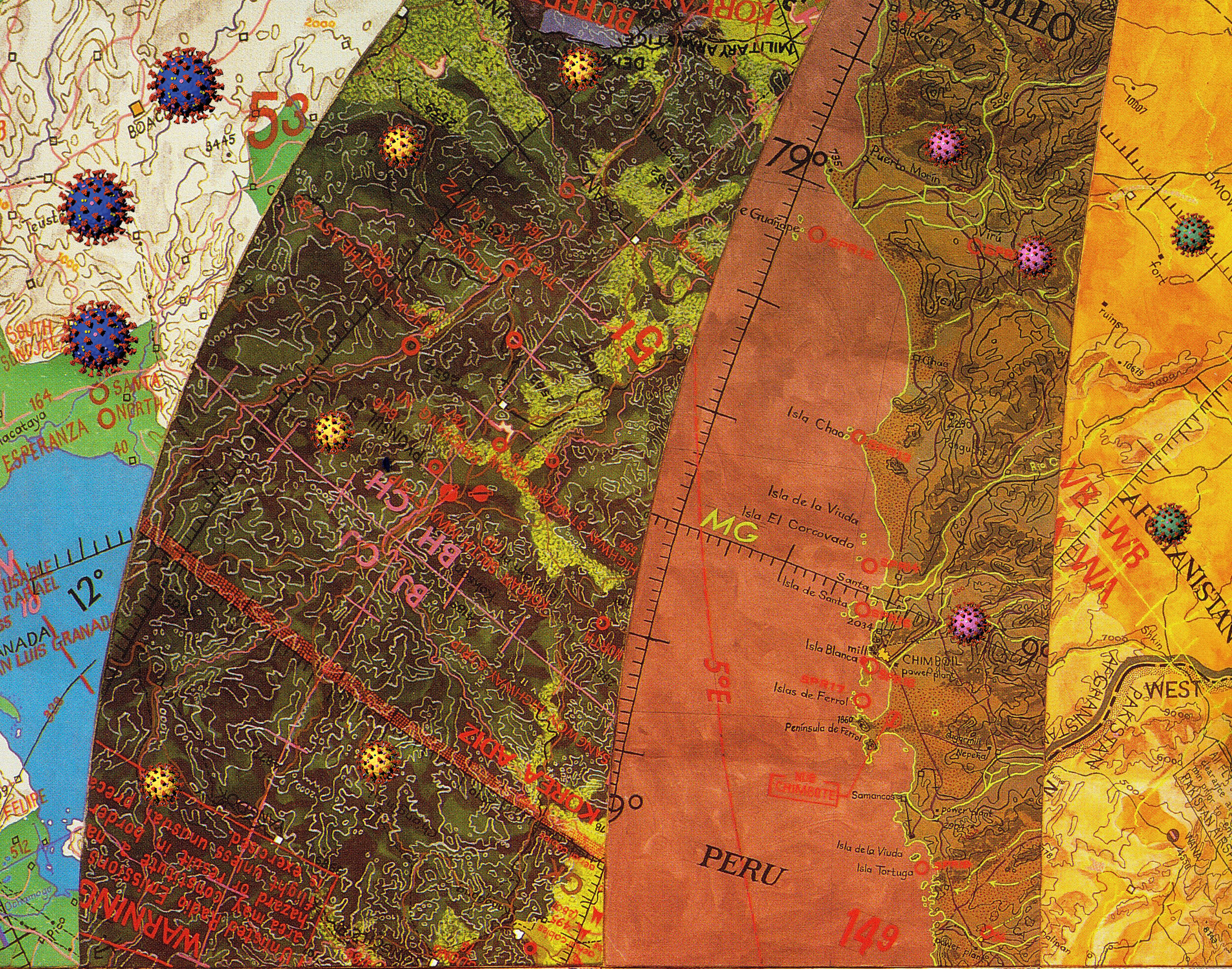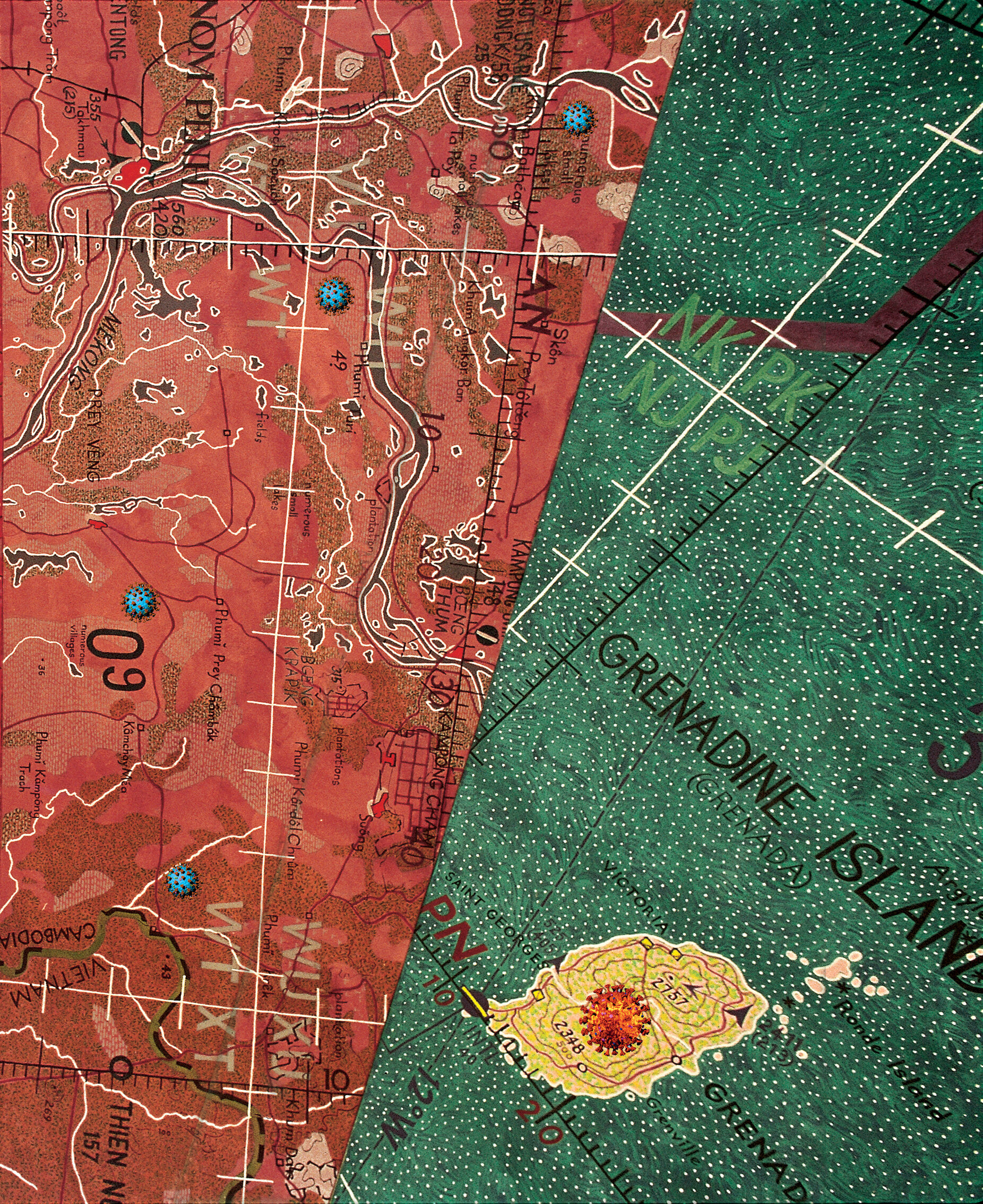JOYCE KOZLOFF
Throughout my career, I have tried to fuse a love for widespread artistic traditions with an activist temperament. Beginning in 1970, energized by my participation in the feminist art movement in Los Angeles and New York, I became a founding member of the Heresies publishing collective and an originating figure of the Pattern and Decoration movement. My colleagues and I were exploring the applied and decorative arts, especially visual cultures of the nonwestern world, as source and inspiration. We wanted to break down the high art/low art hierarchies inherent in the West. As a result of these early discussions and excursions, my patterned paintings eventually moved right off the canvas, evolving into installations composed of hand painted, glazed ceramic tiles and pieced silk wall hangings.
During the 1980s, I concentrated on grand, ambitious public commissions, many in transportation centers, executed in ceramic tile and/or glass and marble mosaic, completing fifteen between 1979 and 2003. Out of a desire to communicate with a broader audience, these pieces have local and regional subject matter, sometimes ironically tweaked, sometimes catalogued as an almost archaeological enterprise. I have long rejected the academic disdain for visual opulence – in fact, my dissident political understanding could only be materialized through sensuous processing. Public art presents challenges of scale and context, but also of language and iconography. In the early twenty-first century, I had the opportunity to create pieces in Japan and Turkey, adapting their rich ornamental traditions to my contemporary collage aesthetic. One starts an architectural project with charts of the site.
By the 1990s, maps had become the foundation for my private work, structures into which I could insert a range of issues, particularly the role of cartography in human knowledge. My map and globe works – frescoes, books, paintings, sculptures - which image both physical and mental terrain, employ mutations to raise geopolitical issues. Often their figurations are hybrids, places known only in the imagination, composed of memories and fragments. With an increasing urgency, and moving from earlier, visionary to modern charting as impetus, I seek the physical corollaries between mapping, naming, and subjugation.
During a year at the American Academy in Rome (1999-2000), I created Targets, a 9’ diameter walk-in globe, painted with aerial maps of all the places bombed by the US between 1945 and 2000. There is a disorienting echo inside, so that visitors’ voices are amplified, dramatizing my concern about the barbarity of aerial warfare and vulnerability of civilian populations. Several years later, I developed a large installation piece, Voyages, which included Targets, 65 carnival masks inscribed with maps, and hanging cartographic banners. Together, they examine the history of navigation and western expansion. More recently, I worked with antique cosmological charts of the heavens and terrestrial maps of the earth, overlaid with galaxies and the tracks of satellites found on the Internet. Frightened of future wars in space, I am also drawn into its vast unknown, which today’s astronomers are charting.
In 2011-2012, I completed “JEEZ,” a 12’ x 12’ painting based on the Ebstorf map, a 13th - century circular mappa mundi. It depicted Biblical stories alongside pagan myths within a vision of the world as it was then known. Christ’s body served as a symbolic and literal frame. I drew upon a wide range of artistic practices, incorporating 125 images of Christ from worldwide sources. Archetypal figures accumulate, morphing from holy portraits into a rogue’s gallery of mismatched characters. Its companion, “The Tempest,” was completed in 2014, a 10’ x 10’ work based on a Chinese 18th century world map, in which the Great Wall traverses the upper levels and turbulent seas surround the land mass. Applied to the surface, there are collaged excerpts from more than 40 years of my own art, as well as 3D mini-globes (earrings, ashtrays, erasers, napkin holders, piggy banks, key chains, paper weights, pencil sharpeners, salt and pepper shakers, and yoyos), a merging of seriousness with pop culture. These two pieces together explore eastern and western systems for representing the world.
From 2013-2017, I brought together the various parts of my art, at first challenging myself to unite the patterns and maps by reinventing two 1977 artists’ books, “If I Were a Botanist” and “If I Were an Astronomer”: their pages were based on geometric Islamic star patterns, morphing and tessellating in and out of one another. I expanded them to mural scale, layered with outtakes from earlier projects. Their dense, saturated color and joyful aura disguise the embedded political content, visible on closer inspection.
And then I discovered a cache of my childhood drawings at my parents’ home, created between ages 9-11, which escorted me much further back in time. I incorporated these drawings, many of which are cartographic, into paintings of early maps. From their different stages of life, the young girl and the adult woman began to shift back and forth within the pictorial space. I’d also retrieved my childhood doll collection, and some of those toys found their way into the work, parading along shallow stage-like platforms. Later, I began copying entire childhood drawings directly onto smaller canvases, creating enclosed, subsidiary works excerpted and reinterpreted from the first series. The worldview of my naïve public school pictures is that of early 1950s America. The mindset is further away from me today than the places were then, but my conventional grammar school innocence feels weirdly relevant to me - within our polarized society, where so many people hold onto fantasies about recovering an imaginary past.
I luxuriate in the sheer beauty of maps, as incised diagram and reflection of our world. Co-existing social concerns have been with me from my beginnings as a young feminist artist: how to create an art that is both graphically satisfying and intellectually questioning.




